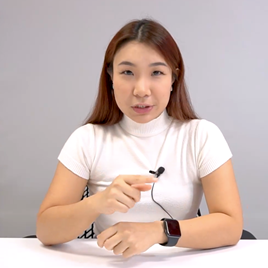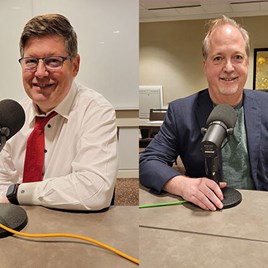Sep 01 2023 / Round the Table Magazine
12 tips about Instagram posts, succession planning and flattering the wealthy
Topics Covered
Allocating retirement planning
I introduce asset allocation with clients by dividing retirement life into two parts: basic life and high-quality life. Basic life is daily expenses, like food, clothing, housing and transportation. These basic things must be planned with a certain income. High-quality life is fine dining at restaurants, entertainment and travel, which is suitable for variable income such as dividends. After showing them that breakdown, I discuss the details of asset allocation.
—Chin-Lung Wang, Taipei City, Taiwan Area, 21-year MDRT member
Instagram lessons
When I created my profile on Instagram, I opted to use a private account so I could select the clients I would like to invite and support them in achieving their financial goals. Initially, I posted content about products, campaigns and various updates from the company I represent, but I didn’t get the response I desired. It actually made my personal branding weaker because I looked like a walking brochure. I learned to be myself on social media. I began posting more content about my daily activities, like spending time with family and in the office. This approach brought me a positive response from my followers.
—Novena Amauri, Jakarta, Indonesia, six-year MDRT member
Yes, but …
For years I spent a lot of time talking about how to say no nicely, but when it behooves us to say yes, I suggest saying yes without guilt. Think of a time when you agreed to something and later thought, What was I thinking? Why did I say I was going to do that? To avoid that scenario, we can say yes with boundaries by using “if,” “when” and “as soon as.” Some examples: “If you’re able to get me the information I need by tomorrow, I can get those serviced for you.” Or “When I finish this paperwork, I can start the next step,” or “As soon as we complete this process, we can move forward.” It’s really saying yes but making sure we don’t get trampled in the process by setting boundaries.
—Sarita Maybin, author and expert on transforming difficult conversations into constructive communication and 2022 MDRT EDGE presenter
Leveraging annual reviews
Every month, my staff prints the policies that are renewed for life and medical coverage in that month from my first year to date. We mark each of them to make an appointment and remind clients what they purchased at that time. This outreach has helped me give better service to my clients. We review the plan, remember the objective, review the beneficiaries, and review the amounts of savings and protection. This exercise makes clients aware that it is necessary to save more and have greater protection. In addition, if their situation is changing, there is always something else they may need. It also is a good time to ask for referrals and to remind them that we will be there with them.
—Veronica Suraci Altamirano Bezares, Coahuila, Mexico, 15-year MDRT member
Resource book
I give all my clients a physical book I call “The Family Love Letter.” It’s a book their family can refer to that has information about their accounts, insurance policies and contact information in one place that the surviving family would need should the client die. It asks them: Who is your attorney? Who is your accountant? What files do you have with these people? I fill out the page in my part of the book, and when they see it’s partially filled, they like the idea and start filling it out.
—Meredith Gail Langus, FSCP, CLU, White Plains, New York, USA, 11-year MDRT member

Listen to understand
Empathy is about leading with a high level of deep responsibility and respect for the client and the vision they have for their future. This calls for the need to slow down and truly listen with the intent to learn. While some of us are born empathetic, I’ve come to understand that for many advisors, empathy needs to be a learned behavior. It’s not that empathy doesn’t exist within us all, but you must revise how you value it, what you pull from it, how you leverage it, and the impact of it on building the most powerful client relationships possible.
—Todd Fithian, co-founder and managing partner of the Legacy Companies, a financial advisor coaching service
Succession planning
I’m a firm believer that you have two choices when it comes to selling your practice. You can either sell it too soon or too late. If you sell too late, that’s a problem. If you sell too soon, that’s usually a better scenario. Most businesses are better served by transitioning before it’s necessary because you’re always thinking about how to make the business better. When you’re selling the business too late, typically advisors are doing so out of fear, and there’s no room for making a successful transition. I always wanted to sell my business too soon, and believe it or not, I started looking for a successor almost from the time I started my individual firm.
—Donald F. White Jr., CLU, ChFC, Palm City, Florida, USA, 34-year MDRT member
Flattering the wealthy
Occasionally, I use these scripts to flatter a high-net-worth person or a couple to get a meeting and then convert the information appointment to a prospect appointment. For setting an appointment, I might say: “While we are overdue to catch up on several fronts, Bill, this is a business call. I know you and Linda already have your ducks in a row/stuff sorted out/finances organized (whatever fits the relationship) and that’s the reason I’m calling. I’d like to pop by and show you how my business is an ally with families and business owners. Again, I know you’re in a better position than most, and you would know others who could benefit from my expertise. So, when would I find you both at home with a few minutes to spare?”
Then during the information meeting, the script might go like so: “I appreciate you taking the time with me. Linda, I mentioned to Bill that you likely have your finances organized, but I’m hoping to borrow your influence. I’m going to share a few simple, yet powerful concepts with you in hopes that, when the topic comes up around the watercooler at work, you might keep me in mind.”
After sharing 10 or 15 minutes of ideas, they thank me for thinking they are all sorted out and admit that they really need someone to help them get on the right path. If they’re already working with someone or, better yet, their bank, I offer to be the “second set of eyes analysis” at my cost as a thank you for taking the time to help me.
—Robert J. Hack, Vancouver, British Columbia, Canada, 15-year MDRT member
Doctor assessment
I have clients who are medical doctors, and I use this analogy when I’m trying to get them to divulge details that I need for their financial planning. To get their attention, I say, “If you want to diagnose a patient, you need to know about their diet and activity. When I’m trying to diagnose your finances, I need to know about how you’re spending your money.”
—Daniel N. Tochinskiy, Tampa, Florida, USA, 10-year MDRT member

Less is more
Try to make the presentation as simple as possible so it is easy for your clients to understand. Often the reason clients fail to make a decision is because the proposal is so complex that their brain thinks there’s a lot to pay attention to. Complex and detailed content has its benefits, but it can make it impossible for clients to make decisions. Use simple, easy-to-understand briefings to make it easier for them to decide.
—Ho Fung In, Hong Kong, China, five-year MDRT member

Camera angle
I invest in my office so that prospects and clients can see a business environment in video calls. I also dress in a shirt and jacket to be formal in my appointments with clients, even for Zoom meetings. I take great care of the image and of everything that happens during that meeting to inspire confidence. I have two webcams so, in the middle of a video conference with the client, the screen angle changes automatically and is more interactive.
—David Fitz Ocampo, Mexico City, Mexico, nine-year MDRT member








![Understanding the reasons behind policy surrenders in India and how to avoid them [Ankita Agarwal]](https://www.mdrt.org/globalassets/digizuite/32751-en-india-video-interview---ankita-agarwal-thumbnail.png?height=268&crop=0,0,268,268)
![The shifting sands of wealth management [Ramesh Kumar Damani]](https://www.mdrt.org/globalassets/digizuite/32748-en-india_video-interview_ramesh-damani-thumbnail.png?height=268&crop=0,0,268,268)
![Leveraging social media for client acquisition [Ankit Goyal]](https://www.mdrt.org/globalassets/digizuite/32753-en-india_-video-interview_ankit-goyal-thumbnail.png?height=268&crop=0,0,268,268)
![Elevating your financial advisory journey: how the right mentor can propel your success to new heights [Surabhi Chaudhary]](https://www.mdrt.org/globalassets/digizuite/32702-en-updated_-india_video-interview_surabhi-chaudhari-thumbnail.png?height=268&crop=0,0,268,268)

